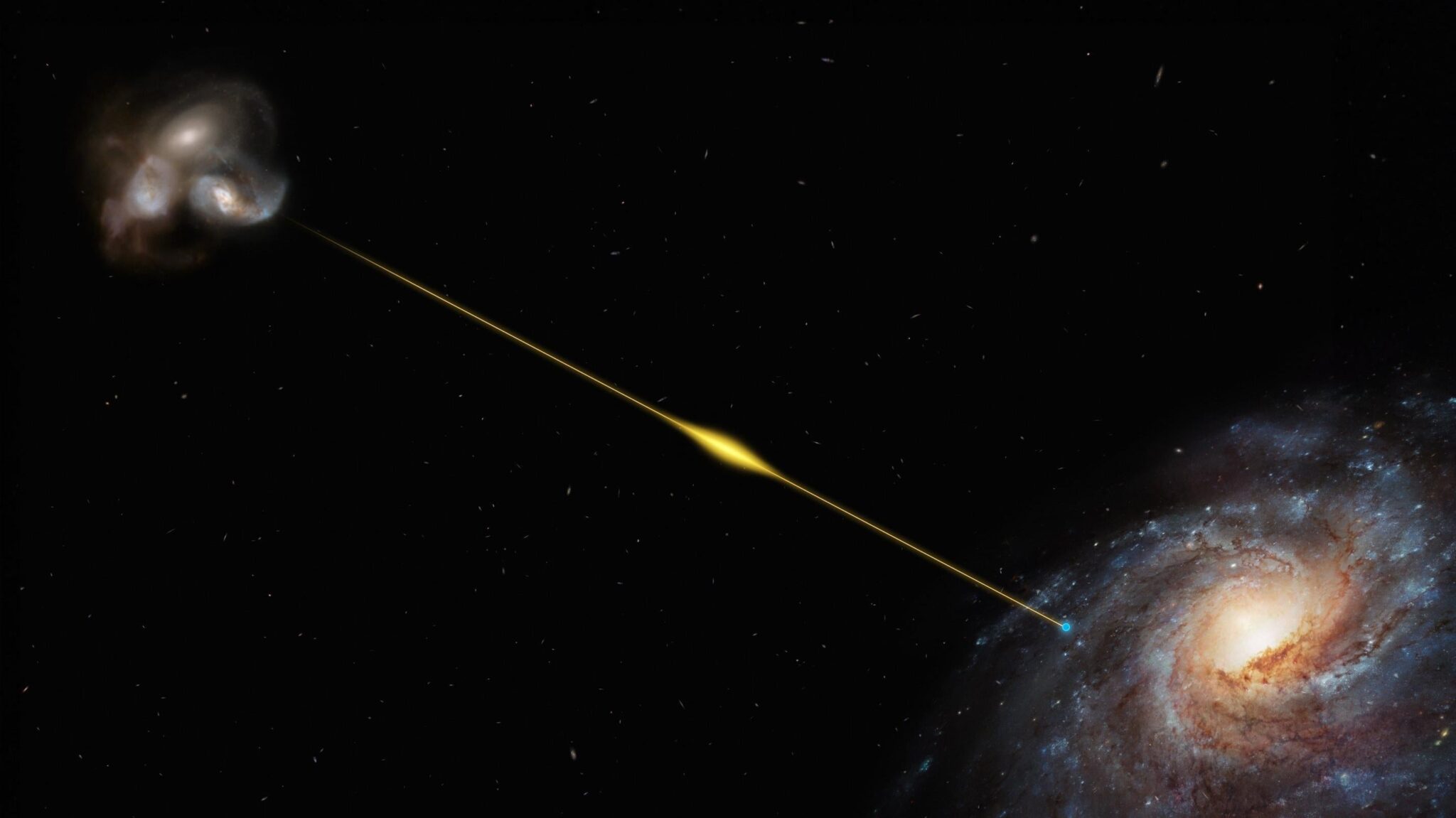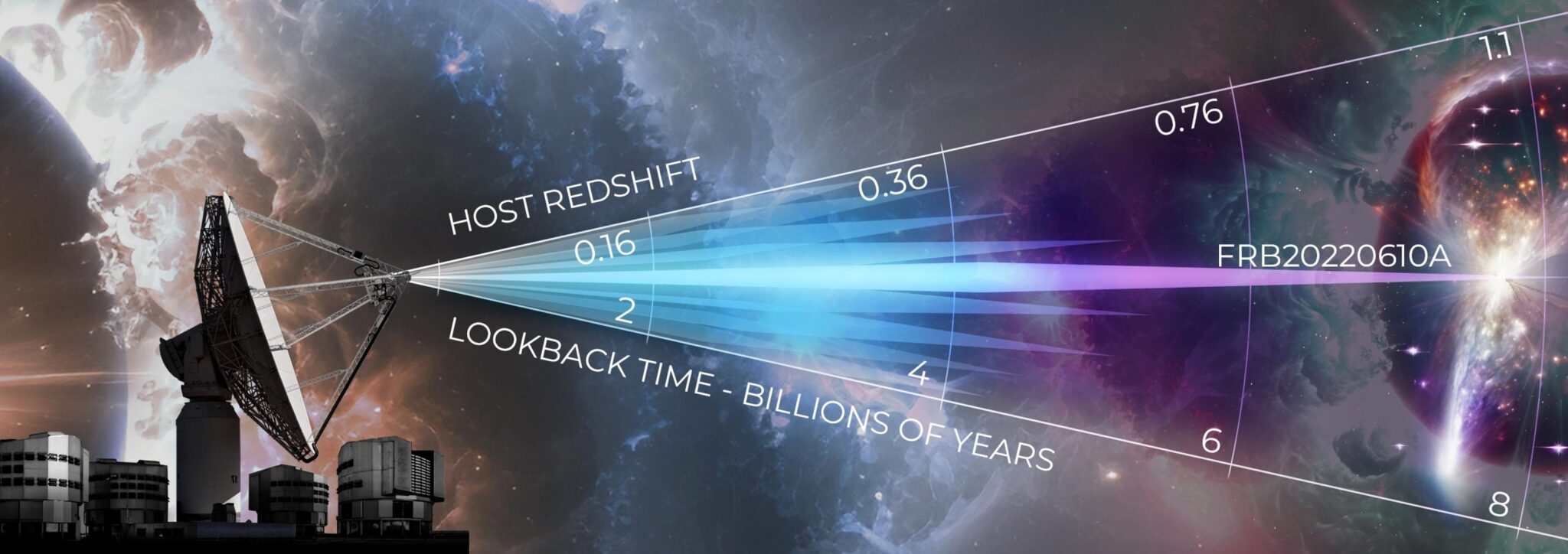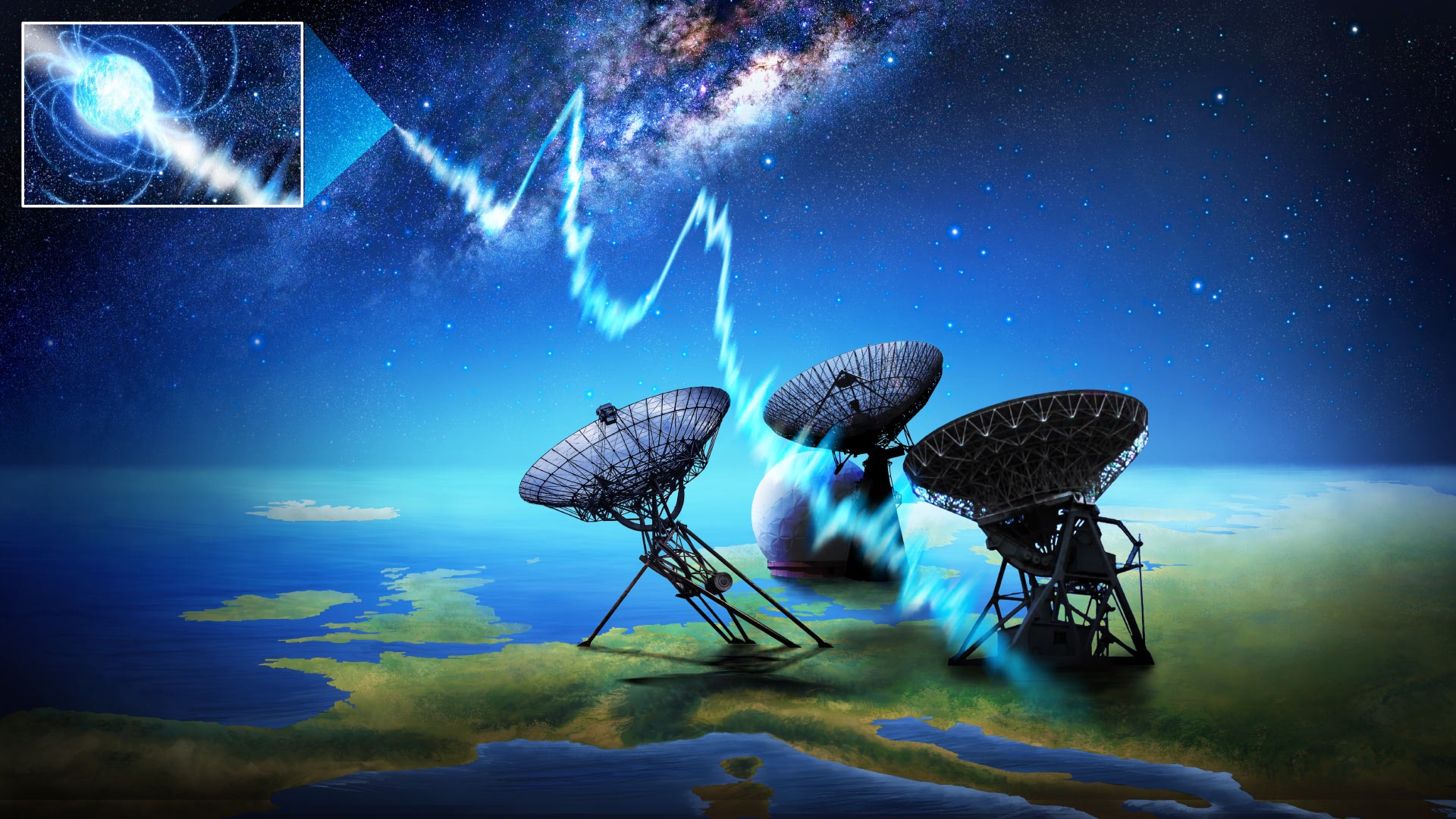In June 2022, an event that struck the scientific world occurred in Western Australia, where the ASKAP radio telescope (Australian Square Kilometer Array Pathfinder) recorded an extremely weak radio signal from a distant galaxy. It seems that this event has opened a new chapter in astrophysics, as the signal turns out to be the most distant among all known fast-flowing radio signals, known as FRB (Fast Radio Burst).

FRBs are fast radio bursts that have extremely high energy compared to our Sun. The Australian ASKAP telescope, consisting of three dozen 12-meter antennas, has detected this extraordinary signal. Further analysis was carried out using the Very Large Telescope (VLT) of the European Southern Observatory in Chile.
Stuart Ryder, an astronomer at Macquarie University in Australia, said, “Using the ASKAP array of antennas, we could determine exactly where the burst came from.” Scientists determined that this FRB was the oldest and most distant than any other known FRB source. The source is probably located within a small group of merging galaxies.

The location of the FRB source was determined as a system of galaxies with a redshift of about 1. This corresponds to a distance of more than 10.147 billion light-years. Other data indicate that this radio burst emitted energy equivalent to 30 years of solar energy in a fraction of a second. Although the origin of FRB remains mysterious, neutron stars and magnetars are considered possible sources of these radio signals.
FRB and ionized intergalactic gas
Distant fast radio bursts, such as FRB 20220610A, are useful to astronomers because they detect gas that lies between galaxies. According to study co-author Ryan Shannon, an astronomer at Swinburne University of Technology, this ionized gas contributes to the total mass of the Universe, but part of this mass is difficult to detect because it is very sparse in the space between galaxies. Astronomers noted that some recent FRBs seem to violate the theoretical McQuinn relation, describing the relationship between FRB and ionized gas in the Universe.

The ASKAP telescope has previously been noted for its ability to detect mysterious radio signals, including those originating from our galaxy. The construction of the Square Kilometer Array (SKA) observatory, which promises to become the largest in the world, has begun, and its launch is scheduled for 2028. But, as is often the case in astronomical projects, the exact launch dates may vary.
When SKA starts working, scientists hope to get even more data about remote FRBs and other mysterious phenomena of the Universe, revealing new mysteries of the cosmos to us.
Earlier we reported on how the source of fast radio bursts puzzled astronomers.
According to science.org
Follow us on Twitter to get the most interesting space news in time
https://twitter.com/ust_magazine


